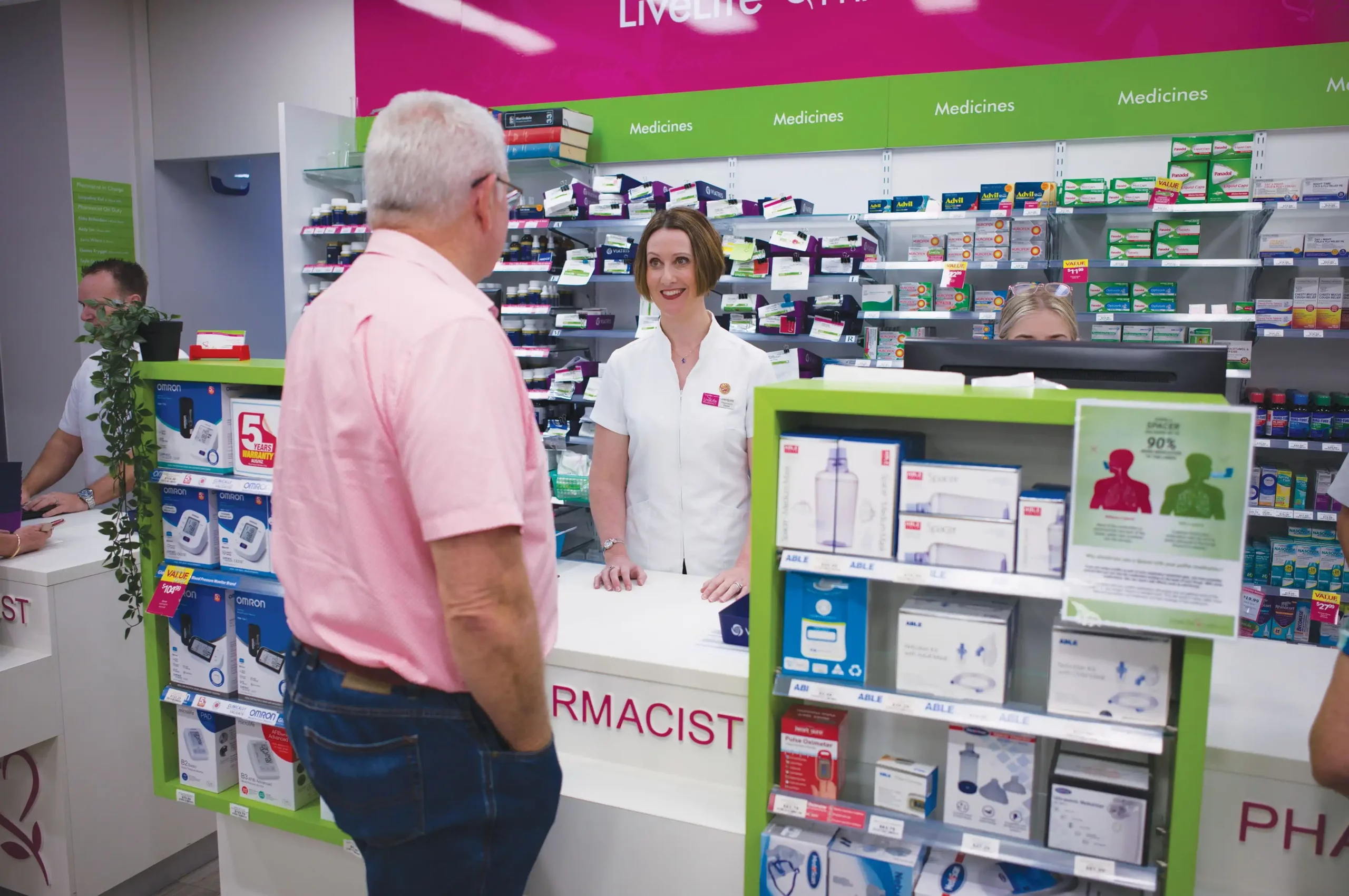Pharmacy’s ‘go to’ reference – the APF – describes expected practice, not just best practice. Common ailments are no exception.
What does provision of Pharmacist Only medicines look like in your practice? And when was the last time you opened the Australian Pharmaceutical Formulary and Handbook (APF) to support appropriate supply of a Pharmacist Only medicine?
There are currently almost 100 entries listed as Pharmacist Only medicines in the Australian Poisons Standard, ranging from the short-acting beta agonists salbutamol and terbutaline to levonorgestrel and ulipristal for emergency contraception and life-saving naloxone.1 And each of them, in some way, is supported by common illness-specific treatment guidelines in the APF, sometimes colloquially referred to as the “bible of pharmacy”.
‘The APF treatment guidelines for pharmacists articulate the systematic process that pharmacists should follow when assessing the patient, determining appropriate management options, agreeing on a management plan with the patient and providing information about the condition and treatment to the patient,’ says Claire Antrobus MPS, PSA’s Manager – Practice Support.
The APF26, released in February, includes 30 chapters dealing specifically with the decision-making process for consultations related to non-prescription medicines. This reflects a shift to condition-specific guidelines over drug-specific guidelines, as well as the expanding prescribing scope of practice enabled through regulation changes in recent years.
New guidance on anorectal disorders is included in the APF26.
The chloramphenicol, famciclovir and orlistat guidelines have been replaced by new guidelines for conjunctivitis, cold sores and weight management to provide pharmacists with guidance on all the available treatment options for these conditions.
 Use it every day
Use it every day
But how often are the guidelines being used? And does this matter?
A recent survey of 574 registered pharmacists, pharmacy interns and students found just 69% had accessed guidelines available in print and online in the previous 12 months.3 The most common reason respondents (77% of them registered pharmacists) reported for not using the Pharmacist Only medicines guidelines was that they ‘did not need the information they contained’. Other reasons included that they had accessed the guidelines more than 12 months beforehand or they were unaware the guidelines were available.
With community pharmacists most likely to be those who encounter requests for S3 medicines, the authors noted that nearly half of those surveyed used the guideline for emergency contraception the most, followed by guidance for chloramphenicol. Online, the most frequently accessed Pharmacist Only medicine guideline was for adrenaline (17%), and the next most commonly consulted was the guideline for nitrates (9%). The least accessed guideline by pharmacists and pharmacy students, according to the study, was for astrodimer, while only 11% of the pharmacy interns surveyed sought guidance for high-concentration fluoride toothpaste in the preceding year.
The study authors noted that with more than 75% of respondents reporting that the guidelines information was exactly what was required, their findings were consistent with previous research that pharmacists’ motivation to use guidelines was directly related to their perception of relevance to their practice.
The authors concluded that based on their research, and other studies, pharmacists’ practice in relation to the supply of Pharmacist Only medicines is variable, not always in line with recommendations, and awareness of treatment guidelines needs to be raised.
This inconsistency is often confusing to patients and means missed opportunities to effectively address patients’ common ailment concerns. For instance, and in line with the study conclusion, irrespective of a pharmacist’s perceived knowledge, the guidelines should be consulted often, and from an easily accessible place, to ensure care is provided consistently and in line with current evidence.
‘These [S3] medicines are prescribed by pharmacists, and we should be treating them as such,’ says Ms Antrobus.
‘This requires determining what treatments best meet a patient’s therapeutic needs as well as checking safety,’ she says. For example, many women don’t realise that in most cases ulipristal is preferentially recommended over levongerstrel for emergency contraception. And few patients know that simple analgesics (soluble preferred) are first-line pharmacological treatment for migraines.
‘The APF guidance documents contain this level of detail,’ Ms Antrobus stresses. ‘We work really hard, backed by a rigorous quality assurance process, to ensure content is evidence-based, accurate, current, relevant and is consistent with Australian best practice, standards and legislation.’
Differential conditions
Long-time chair of the APF Editorial Board Emeritus Professor Lloyd Sansom AO FPS agrees: ‘Each guideline contains information on the presentation of the condition, including differential conditions which may present with a specific symptom,’ he says.
‘The guidelines discuss treatment options, including possible non-pharmacological interventions and contain information on the use of medicines in pregnancy and lactation.
‘It is essential for pharmacists to develop a standardised procedure for managing patients presenting for advice and treatment options, and the APF will provide key information to assist pharmacists in the important role of providing a high-quality primary health care service.’
Consistent use is key
So how often should the average pharmacist use the APF? It’s probably more than you think.
‘I know of pharmacists,’ says Ms Antrobus, ‘who say they consult the APF guidance documents nearly every shift, as they provide valuable decision support for unusual or atypical presentations. And when you are taking an adequate patient history to assess their needs – you’re probably going to come across atypical presentations fairly often.’
As no two patients are the same, it is important to get a good patient history on request and provision of S3 medicines to patients, points out Adelaide-based community pharmacist Raymond Truong MPS. ‘It is also important to understand the patient symptoms where a differential diagnosis may be required’ and to determine the nature and extent of the presenting complaint to ensure supply of an S3 medication is appropriate ‘and not masking something’ more serious.
For instance, a female may request the emergency oral contraceptive pill. But a thorough patient history may establish she is taking St John’s Wort, or another strong CYP3A4 inducer such as carbamazepine and phenytoin. These products may interact adversely with levonorgestrel and ulipristal acetate and reduce the efficacy of the emergency contraceptive pill, Mr Truong points out.
By accessing the guidance document, a pharmacist may consider referral to a general practitioner for consideration of a copper IUD if timely access to a doctor is possible.
But if timely access is not possible due to lack of or limited access to a GP, then Mr Truong says clinical recommendations support the use of doubling the dose of levonorgestrel because the use of ulipristal acetate in this scenario is not recommended. This scenario, he adds, is commonly encountered in late-opening pharmacies.
Good care isn’t always easy
The pressures which are a barrier to patient care are many.
Time constraints, patient familiarity with medicines, workload and increasing complexity of care are among the plethora of factors that make good practice seem difficult.
‘The provision of health care has become more of a challenge in many countries in the world due to work force issues and increasing demand for health services,’ Emeritus Prof Sansom says.
‘Optimisation of the delivery of primary health by pharmacists will assist the health system as a whole to better manage the demand.’
Mr Truong helped review APF26. ‘No two patients are the same. You need to have the best information for your patient at your fingertips.’
And all members of the pharmacy team, including interns, assistants and dispense technicians, should understand the legal requirements of the provision of Pharmacist Only medicines, he warns.
To practice well, despite barriers to patient care, he advises keeping the latest edition of the APF (or APF digital) available to team members, along with other reference texts which are considered mandatory by Pharmacy Board of Australia guidelines.
‘As the custodians of medicine safety, pharmacists must demonstrate effective management of Pharmacist Only medicines to ensure quality use of medicines in a safe and effective manner,’ Mr Truong says.
‘In turn, this instills trust and confidence in the pharmacy profession among members of the public and other healthcare professionals that we can provide timely access to these medicines.’
Further reading
Pharmacists can ensure they are up to date with expected practice with the provision of Pharmacist Only medicines by consulting these resources:
- The Australian Pharmaceutical Formulary and Handbook (APF), available in print and online, the essential reference for pharmacists.
- PSA’s Resource Hub provides practices support tools, professional standards, guidelines and other resources.
- Maintain clinical knowledge through continuing professional development, such as reading AP, completing PSA’s Essential CPE and attending conferences.
- Refer to state/territory laws for dispensing and labelling requirements.
References
- Therapeutic Goods Administration. Therapeutic Goods (Poisons Standard–October 2023) Instrument 2023. 2023. At: www.legislation.gov.au/Details/F2023L01294
- Pharmaceutical Society of Australia. Pharmacy Board of Australia recommended references. 2024. At: www.psa.org.au/media-publications/pba-references/
- Mill D, Johnson JL, Percival M, et at. Pharmacists’ use of guidelines for the supply of non-prescription medicines: a cross-sectional survey. Int J Pharm Pract. 2023;31: 478–88. At: https://academic.oup.com/ijpp/article/31/5/478/7223839
-






 ‘We’re increasingly seeing incidents where alert fatigue has been identified as a contributing factor. It’s not that there wasn’t an alert in place, but that it was lost among the other alerts the clinician saw,’ Prof Baysari says.
‘We’re increasingly seeing incidents where alert fatigue has been identified as a contributing factor. It’s not that there wasn’t an alert in place, but that it was lost among the other alerts the clinician saw,’ Prof Baysari says.









